Thought you might be looking for something serene. Wellington Reynolds (1865-1949) grew up on a farm in Illinois. He moved to Chicago to study painting, later honed his skills in Munich and Paris, before joining the faculty at the Art Institute of Chicago in 1913. In his career, he was best known as a portrait painter. But this painting, “In the Dunes, Laren, Holland,” (ca. 1910), suggests Reynolds retained his feel for the farm scenery of his childhood—and judging from the composition, wanted to draw us into its charms as well. It was an honor to frame this 19″ x 29″ oil recently for California Historical Design.
The scene called for a frame that was simple but that also sustained the peaceful spirit of the painting. The frame is quartersawn oak with Medieval Oak stain. To emphasize the horizontal flatness of the Dutch field, I used altered miters (not 45 degrees) making the sides (at 4″) wider than the top and bottom (3-3/8″). I love chamfers, in part for their rich vernacular tradition, which clearly suits this piece as well. Had a great time designing and shaping this sight edge pattern. I accented the fluid lines with round centers and corners repeating the rounded backs of the sheep, as well as the trees in the background. The edge pattern cuts in to accentuate the lines of the chamfer, revealing a little more of the carved pale gold leaf liner. Hadn’t done that before, and like the results. (Details below.)
Purchase from California Historical Design…
Learn more about Wellington Reynolds…
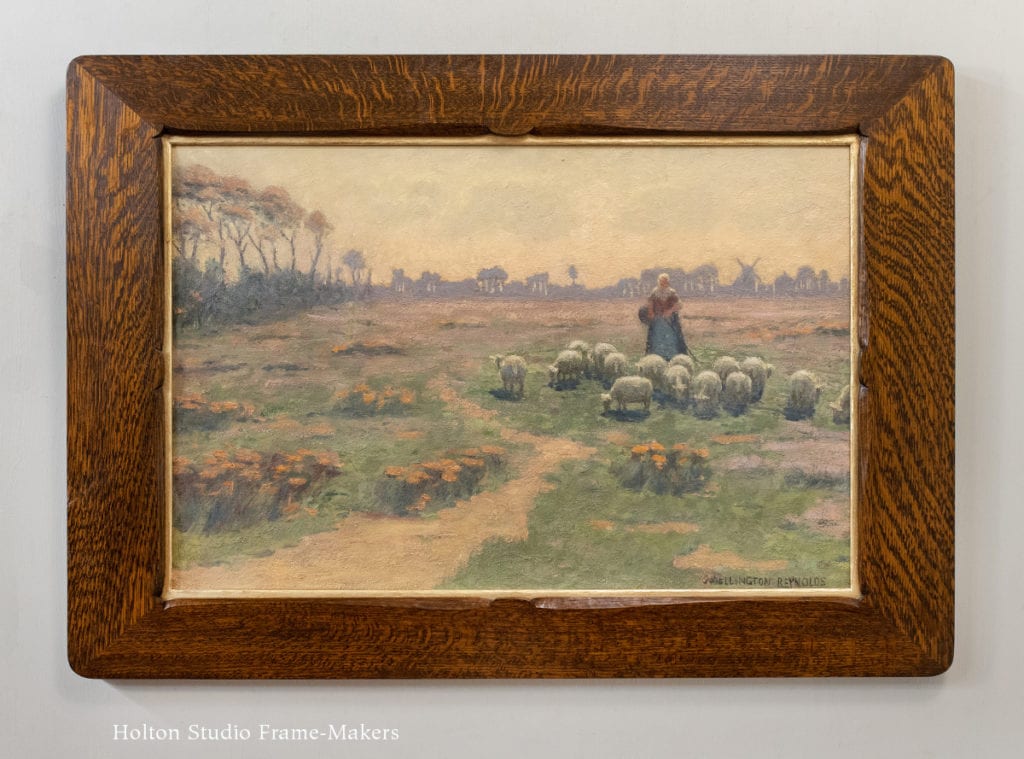
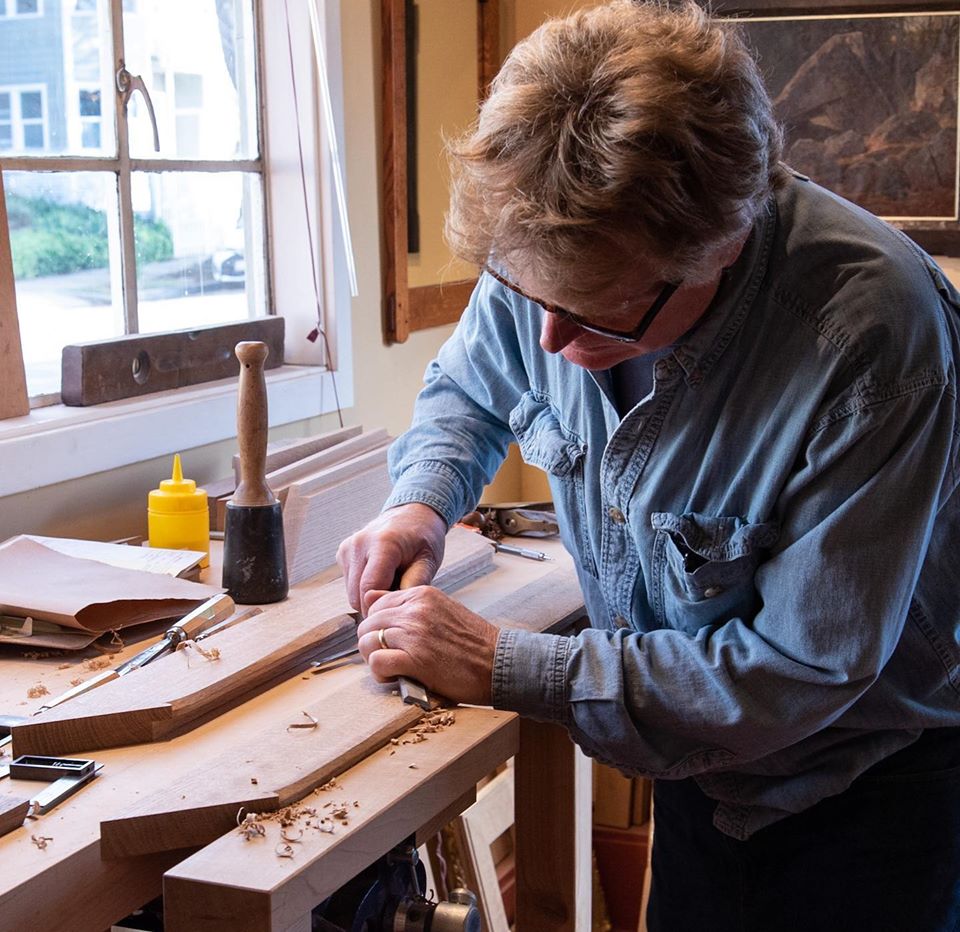
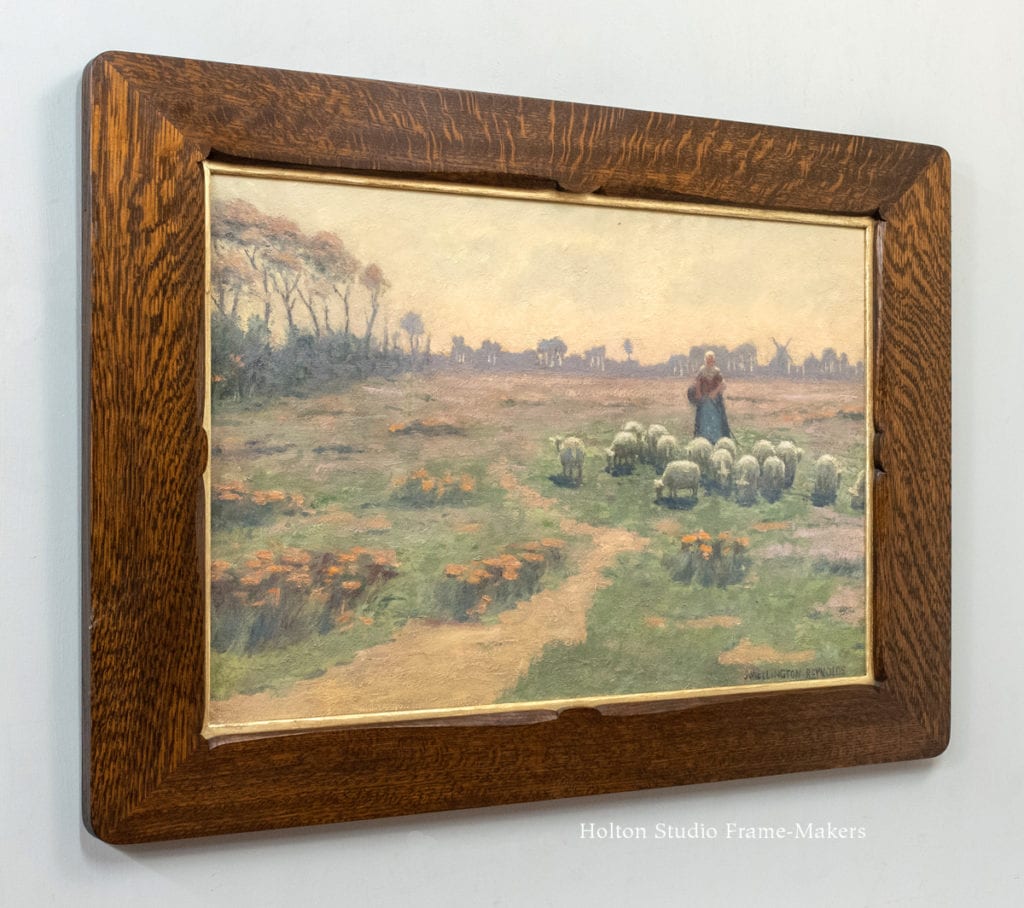
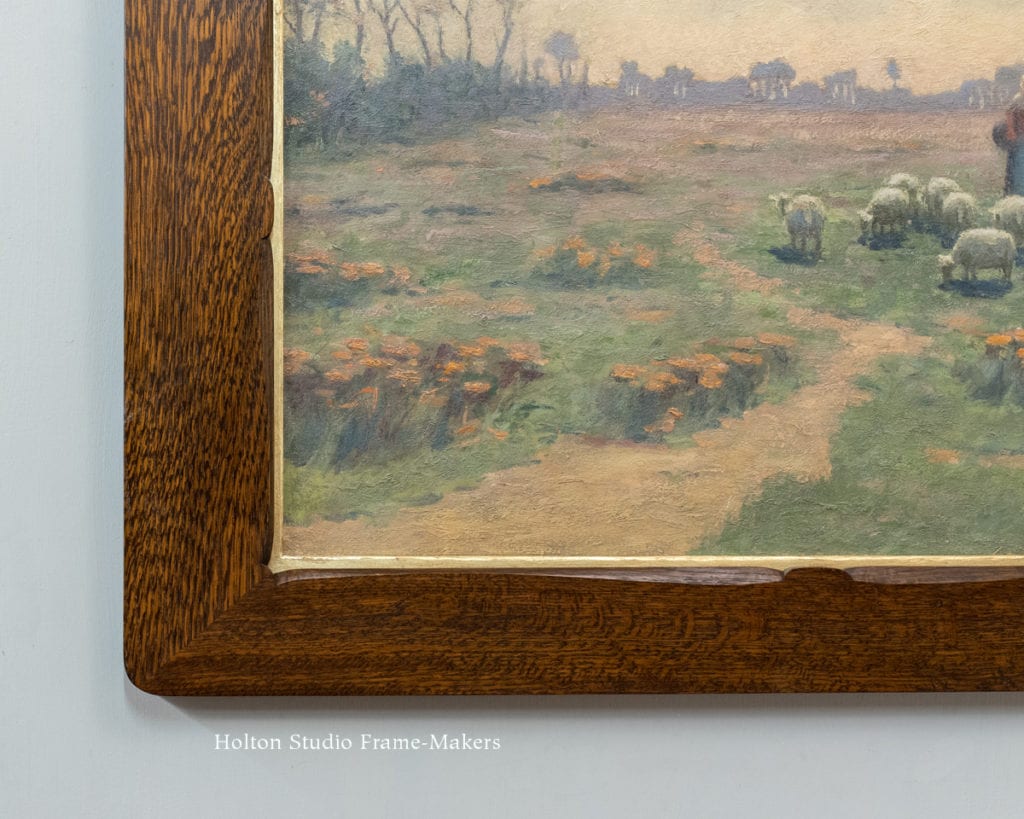
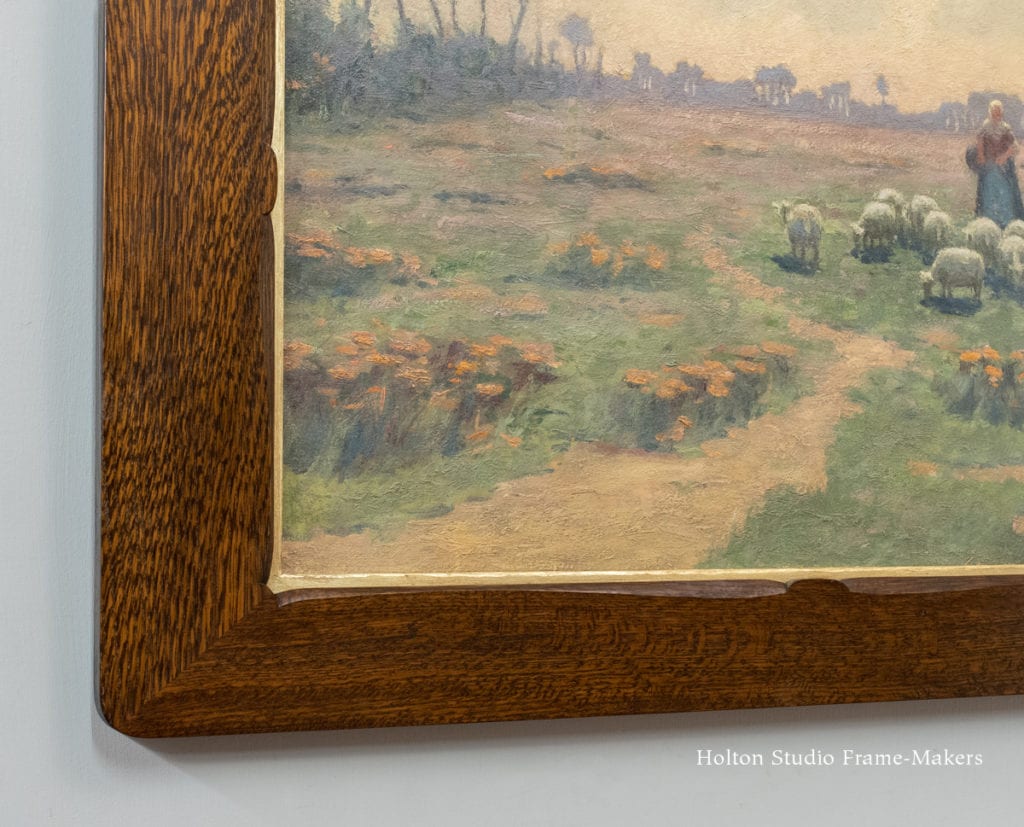
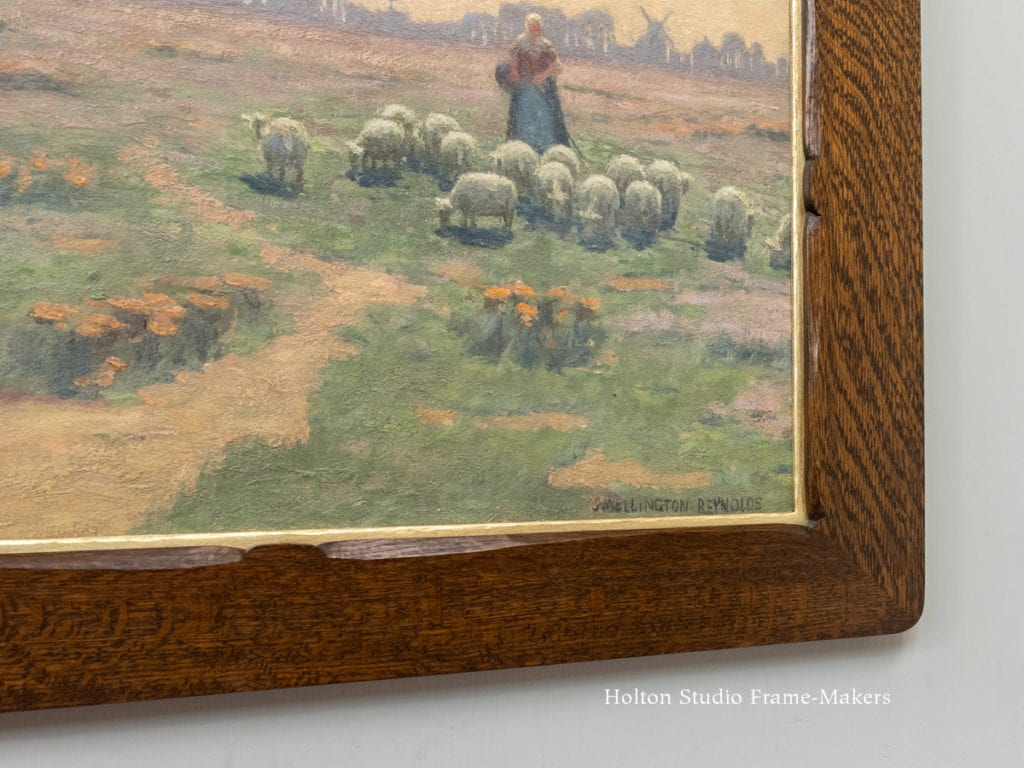
Wow. I could imagine the frame revealed itself as you went through the process, with a rather spectacular conclusion.
If I may ask – did you use hidden splines in the mitres or some other technique?
Marty
Good to hear from you, Marty. The frame is splined (not hidden splines, visible). I had a sketch of the design, but as I drew it out on the frame, it did evolve a little.